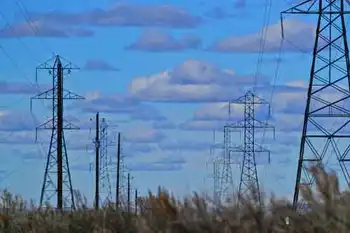Utilities get regulators' approval to start Ely plant
Nevada Power Co. of Las Vegas will pay 80 percent of the cost of the 1,500-megawatt, coal-fired plant; Sierra Pacific Power Co. of Reno will pay the rest.
The commission order specified that the project, which would be the largest power plant in the state, was a "critical facility," meaning the commission could later grant proposed financial incentives.
The attorney general's Bureau of Consumer Protection estimated that the utilities would receive $477 million over the life of the Ely power plant. However, the bureau calculated that the present value of those future payments was $139 million. The utilities commission projected the present value of the potential incentives at $92 million.
In the order, Public Utilities Commission Chairman Don Soderberg outlined 1 percent in added profits that the two utilities could get. But he said the commission would decide how much in bonuses to pay, if any, in 2008.
The advisory suggested the 1 percent add-on is the sum of the total maximum incentives for the utilities meeting renewable energy requirements in state law, exceeding renewable requirements in state law, and meeting a schedule for building the Ely project.
Eric Witkoski, chief of the attorney general's Bureau of Consumer Protection, said the incentives are expensive and unneeded. State law already requires Nevada Power and Sierra Pacific Power to meet renewable energy targets of 20 percent by 2015.
"(The incentives) last the life of the asset," Witkoski said. "For 20 or 30 years, we're going to be paying these incentives."
Commissioner Jo Ann Kelly voted against sections that proposed financial incentives for Nevada Power and Sierra Pacific Power. Profit incentives for the power plant need "to be balanced very, very carefully between the impact on rates and the need for incentives," Kelly said.
In the last few years, Nevada power rates have climbed higher than at other Western utilities except for a few in California, Kelly said.
"We compare favorably to California (power rates), which I don't think is anything we want to brag about, because they're the highest in the country," Kelly said.
Commissioner Rebecca Wagner said she did not want to be "tying the hands of future commissioners" regarding financial incentives for the utilities. But Wagner added: "If this was to be the way of guidance, I agree with that."
In addition, Wagner supported a provision that gives the utilities up to 0.75 percent in financial incentives on equity for wind farms that would generate 600 megawatts. She changed the provision so that the commission later could approve a higher investor bonus for the wind farms.
The amount of the profit bonus for the wind farms is unknown, because wind farms have not been built, said Michael Yackira, chief financial officer for Sierra Pacific Resources, the parent of Nevada Power and Sierra Pacific Power.
"We're certainly very pleased with the commission's support of the Ely Energy Center and our resource plan," Yackira said. "We believe the commission recognizes the need and importance of fuel diversity for our customers." Most of the power used by the Nevada utilities comes from plants that burn natural gas, which has volatile prices.
Kelly said she supported the overall decision to start developing the Ely Energy Center.
"This decision is a bold decision, and I think the times require it," Kelly said.
Many Nevada electric generation plants are nearing the end of their useful life, she said. Also, she said expert witnesses agreed that wholesale power supplies in the West will be "tight" in 2010, a year before the first of two units is expected to start operating at the Ely plant.
If built as planned, the Ely Energy Center's first unit will be complete in 2011. The second unit would be finished in 2013. Together, the units will generate enough energy to power 900,000 homes.
Related News

Are major changes coming to your electric bill?
LOS ANGELES - California’s electric bills — already some of the highest in the nation — are rising, but regulators are debating a new plan to charge customers based on their income level.
Typically what you pay for electricity depends on how much you use. But the state’s three largest electric utilities — Southern California Edison Company, Pacific Gas and Electric Company and San Diego Gas & Electric Company — have proposed a plan to charge customers not just for how much energy they use, but also based on their household income. Their proposal is one of several state regulators received…





